Events
Saturday November 26 from 2 p.m to 6 p.m
DISQUIET OBJECTS, MINING REIFICATION
A study day organized by Lotte Arndt (theoretician, Goethe Institut Fellow at Villa Vassilieff). The event will take place in English.
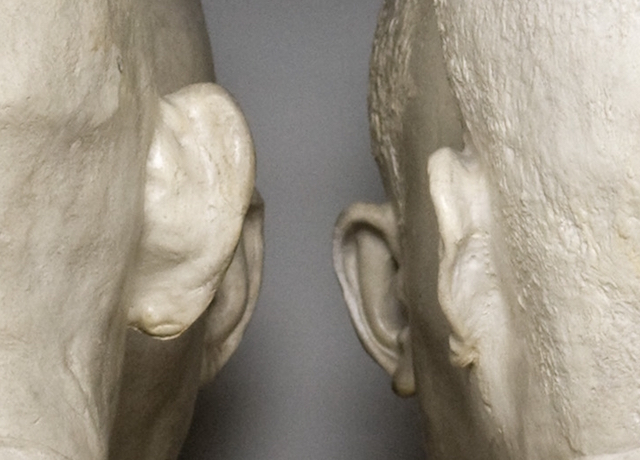
- Plaster mold from World War I, Museum of Natural History, Vienna, Image : Britta Lange
With Bianca Baldi (artist), David Dibosa (art historian, curator), Britta Lange (researcher), Kerstin Stoll (artist), and Elsa Michaud & Gabriel Gauthier (artists).
« If the museum is a place of petrified conflicts, how can we kiss them awake, and how can they kiss us awake [1] ? »
When entering the realm of museums and exhibitions, artifacts undergo a translation from one signifying order to another. Their new status as semiophores (Krzysztof Pomian), as museum objects that mediate between their material appearance and the cultural meaning that they are embodying, easily brings to disappearance the social relations that the object participates in. This erasure concerns the historical context of its fabrication and collection, the biography of the object (Igor Kopytoff), including the different appropriations, re-significations, and physical relocations that are executed on it. In the frame of national collections, the artifact is patrimonialised, becoming through this operation part of the national cultural narrative under official authority. Paradoxically, auratisation, as the production of uniqueness, and its opposite, the integration in objectifying typologies that substitutes subjectivities by species representation can both occur under the same regime. The latter is particularly striking when it comes to human remains and stuffed animals, that can be considered as boundary objects [2], belonging as vestiges of former subjectivities to the realm of the living, while present in the form of inanimate bones.
The study day will bring into dialogue different approaches that allow to call into question the “object-centered and objectifying modes of installation [that despite three decades of poststructuralist and postcolonial critique continue to retain] their exclusive holds on museum displays” as Ruth Phillips records.
Among these approaches Latourian and new materialist conceptions break with the classical museographic understanding of objects by considering them as agents; that means as troublesome and polysemic entities that interact with their environment and impose a resistance to their authoritarian integration in displays and classifications. Propositions based on diasporic theory allow for undermining the integration of the objects into unifying national narratives. If we are questioning the nature/culture divide as a Eurocentric theoretical assumption, the treatment of animals as mere representatives of a species becomes indefensible. Last but not least, struggles led by often heterogeneous groups of stakeholders claiming the accountability of the institutions for the objects that they house, including provenance research and the financial responsibility in potential restitution cases, are key in order to shift existing power relations.
— Lotte Arndt
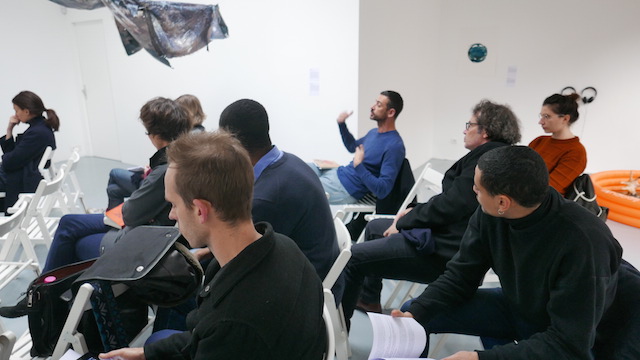
- Lotte Arndt’s seminar "Disquiet Objects, Mining Reification", on November 26, 2016.
PROGRAM
2-2.10 p.m. : Welcome by Villa Vassilieff
2.10-2.25 p.m. : Introduction by Lotte Arndt (theoretician, Goethe Institut Fellow à la Villa Vassilieff)
2.25-2.55 p.m. : Britta Lange (researcher in Cultural Studies, Berlin)
“Racial Casts” as sensitive collections. In conversation with Kerstin Stoll (artist).
Plaster casts of “foreign”, “natural” and colonized people from the nineteenth and late 20th century are part of many European anthropological collections, museums and academic institutes. These “race representations” served as scientific objects to e.g. morphological studies, and as spectacular showpieces to the public in European metropoles. As the casts were produced from living people under precarious conditions, they should be considered as sensitive collections that today require a sensitive discussion. Britta Lange’s contribution will elaborate the case of plaster casts made by Otto Finsch in “Micronesia” in 1882, just before the official German colonization. The negative forms of the casts are today kept in Berlin whereas copies of the positives might circulate in other places.
2.55-3.10 p.m. : Discussion with the audience
3.10-3.40 p.m. : Bianca Baldi (artist, Brussels)
De Brazza’s Monkey
In her ongoing artistic research Bianca Baldi unfolds a face to face situation between an unequal duo, held together by a shared name. Zero Latitude, a work that the artist pursues since 2014, focuses on the French explorer Pierre Savorgnan de Brazza (1852-1905) and a primate that was named after him. Brazzas Monkey, or Cercopithecus neglectus is an Old World monkey endemic to the wetlands of central Africa. While de Brazza traverses central Africa with a lot of equipment that takes the foreground of the pictures, the monkey observes the trip. The features attributed to the traveling European with his colonizing mission (such as the carefully deployed field-bed designed by Louis Vuitton), are designed to oppose the explorer to the monkey, as part of nature, the jungle. Still, as Baldi remarks, “the creatures scent reminds him of his own” and in moments of inattention, a “likeness without social restriction” occurs.
3.40-3.55 p.m. : Discussion with the audience
3.55-4.10 p.m. : Break
4.10-4.40 p.m. : David Dibosa (art historian and curator, London)
Return to La Javanaise: Ethnographic museums as spaces of traction
How can we envisage museums as spaces that not only uphold existing relations but also point towards connections not yet made possible? In his presentation, cultural theorist David Dibosa discusses the moving-image work, La Javanaise (2012). Directed by Dutch moving-image artist, Wendelien van Oldenborgh, the work is set in Amsterdam’s Tropen Museum. Dibosa will put forward a notion of ’object traction’ - the idea that by working against museum contextualisation, objects can be seen as constitutive of their own discourse: drawing people towards them to produce unexpected relations, based on their specificities.
4.40-5.00 p.m. : Discussion with the audience
5.00-5.30 p.m. : PIT : Previously In Tomorrow (season 1) is a contemporary art sitcom airing live created by Elsa Michaud & Gabriel Gauthier, in which the exposed protagonists attempt to propose forms as they go along. By keenly presenting an inventory of their last experiences and references altogether, the performers aim at programming a performance repertory for an immaterial art center.
5.30-6.00 p.m. : Public discussion moderated by Lotte Arndt
6.00 p.m. : Drinks
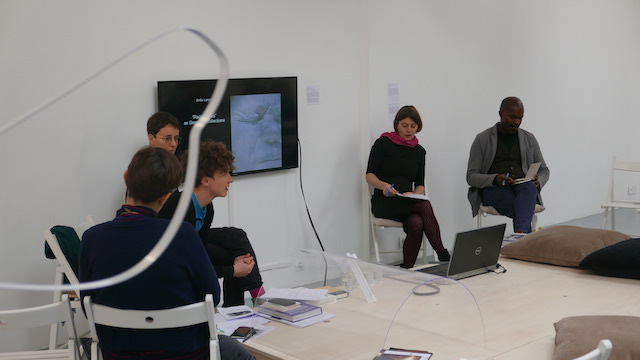
- The participants Lotte Arndt, Kerstin Stoll, Britta Lange and David Dibosa during the seminar "Disquiet Objects, Mining reification", on November 26, 2016.
ABOUT THE SPEAKERS
Bianca Baldi (1985, Johannesburg, South Africa) is an artist who lives and works in Brussels and Frankfurt. She completed her Bachelor’s of Art at the The Michaelis School of Fine Art, Cape Town, and pursued her postgraduate studies at the Städelschule in Frankfurt am Main. Her video installations reveal over-looked narrative strands and the hidden structures of power. By focusing on specific cultural or sociological artefacts, in Baldi’s work historical plots reveal complex webs of political, economic and cultural influence.
Recent and upcoming exhibitions include; 11th Shanghai Biennale, Shanghai (CN)(2016) Pure Breaths, Swimming Pool Projects, Sofia (BG) (2016), Eyes in the back of your head (an incantation), Slovenian Ethnographic Museum, (SL) (2016), The Image Generator II, Extra City Kunsthal, Antwerp (BE) (2016), Open House, Kunstverein Braunschweig (DE) (2015), 19th Contemporary Art Festival SESC Videobrasil, São Paolo (BR) (2015), Sightings, KZNSA, Durban (ZA) (2015),The 8th Berlin Biennale of Contemporary Art at KW Institute for Contemporary Art, Berlin (DE) (2014), Zero Latitude at the Goethe Institut, Johannesburg (ZA)(2014).
Britta Lange received her Phd in cultural science from Humboldt-Universität zu Berlin in 2005, where she also completed her Habilitation in 2012. She was a post-doctoral research fellow at the Max Planck Institute for the History of Science in Berlin (2005-07) and a Lise Meitner research fellow at the Institute of Social Anthropology at the Austrian Academy of Sciences in Vienna (2008-2010). Since 2014 she is a lecturer at the Institute for the History and Theory of Culture at Humboldt-Universität Berlin. During the term 2015/16 she covers the professorship for Wolfgang Schäffner, history of knowledge and culture.
Her research focuses on cultural history and cultural techniques, colonialism and postcolonial approaches, early photo, film and sound documents. She published widely on the history and theory of collections, among others together with Margit Berner and Anette Hoffmann: Sensible Sammlungen. Aus dem anthropologischen Depot (2011), and in 2013, Die Wiener Forschungen an Kriegsgefangenen 1915-1918. Anthropologische und ethnografische Verfahren im Lager.
Dr. David Dibosa is co-author of Post-Critical Museology: Theory and Practice in the Art Museum (Routledge, 2013). He trained as a curator, after receiving his first degree from Girton College, Cambridge. He was awarded his PhD in Art History from Goldsmiths, University of London, for a thesis titled, Reclaiming Remembrance: Art, Shame and Commemoration. During the 1990s, David curated public art projects, including In Sight In View, a billboard project in Birmingham City, England, as well as a sculpture park in the English West Midlands. From 2004-2008, he was Senior Lecturer in Fine Art Theory at Wimbledon College of Art, University of the Arts London. He remains at UAL, where he is now Reader in Museology and Course Leader for MA Curating & Collections at Chelsea College of Arts.
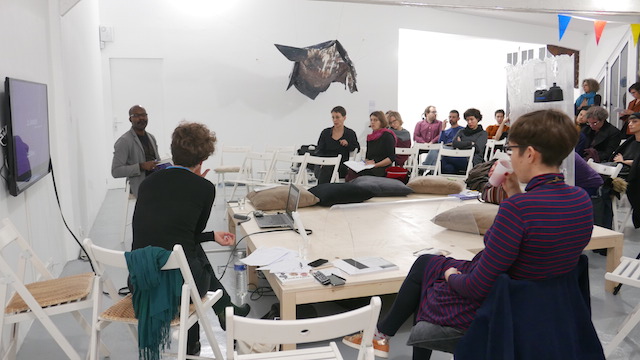
- Lotte Arndt’s seminar "Disquiet Objects, Mining Reification", on November 26, 2016.
Saturday December 10 from 2 p.m to 7 p.m
« POUR PARLER DE MA DEMEURE, IL ME FAUT AUSSI PARLER DE LA DEMEURE DE L’AUTRE [3].”
(Speaking about my home, I also must speak of the other’s home)
Open roundtable discussion on welcoming and sharing
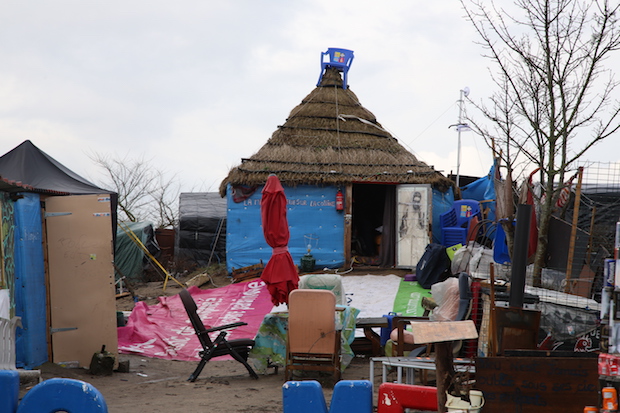
- Still from Hamedine Kane’s film, Habiter le monde, 2016.
A discussion peppered with questions by Lotte Arndt (theorist, Goethe-Institut Fellow at Villa Vassilieff), Emmanuelle Chérel (Doctor in Art History, Professor in Art History at École des Beaux-Arts de Nantes), Peggy Pierrot (researcher and independent counselor in software studies and speculative narrations) and Virginie Bobin (Head of Programs, Villa Vassilieff).
With the participation of, among others, Thelma Cappello and Rafael Moreno (artists), Maxime Jean-Baptiste (artist), Hamedine Kane (artist and director), Elsa Michaud and Gabriel Gauthier (artists), Victorine Grataloup (curator, project coordinator at Villa Vassilieff), Mohammed Jamous (Refugees of Rap), Nathalie Muchamad (artist), Hélène Deléan (SPEAP), Dimitri Rimsky (artist ; Une autre mairie de Calais/SPEAP), Myriam Suchet (researcher, author of "Indiscipline"), The Cheapest University....
During World War One, Marie Vassilieff opened a canteen in her studio. This place, where the impoverished artists from the Montparnasse area could receive a warm meal, evolved rapidly into a location for sociability, for encounters with old connaissances and people who still were to become friends. Declared as a private club, the studio could escape the restrictive opening hours of the curfew.
Several aspects in this story prove to be interesting for our present situation: Vassilieff uses the peculiar private working space that is the artist studio and transforms it into a public resource. As it has been an important stake in feminist movements for long, she slyly subverts the borders of the often clearly traced division between private and public. Where the emergency legislation of the war tended to separate and divide people, she created a new social center. May this strategy indicate a direction to counter the progressive transformation of public resources into private wealth? A path to follow when the restricted public freedoms and the needs of the ever growing number of destitute people in the city sharpens the social crisis everyday?
According to Emmanuel Levinas, the house has a key role to play in this relation, as it points to the inside and the outside alike: “Le rôle privilégié de la maison ne consiste pas à être la fin de l’activité humaine, mais à en être la condition. […] Simultanément dehors et dedans, [l’humain] va au dehors à partir d’une intimité. D’autre part cette intimité s’ouvre dans une maison, laquelle se situe dans ce dehors [4].”
In that sense, a house means, rather than a physical place, a structure that is able to welcome and to shelter. From here we may leave behind an object-focused conception of artistic practice and think about reciprocity in the frame of the city. In that regard, Henri Lefebvre states that: « La ville est œuvre, à rapprocher de l’œuvre d’art plus que du simple produit matériel. S’il y a production de la ville et des rapports sociaux dans la ville, c’est une production et reproduction d’êtres humains par des êtres humains, plus qu’une production d’objets [5]. »
What can it mean for our practice to conceive of the intimate and the public as necessarily imbricated? As art spaces are strongly marked in terms of their social exclusivity, the esotericism of the esthetic and theoretical language and the high symbolic borders of their entry-thresholds, how can we displace these limits, translate our practice and bring it away from the controllable and well-know contexts that we are used to evolve in?
If one key political question lies in the capacity of societies to reciprocate resources, proposing a place for sharing ideas, solidarities, or a meal establishes a fundamental condition for any social tie. It is not by chance that uncountable artists throughout the twentieth century have proposed settings for sharing. What can it mean for cultural institutions and practitioners to enact hospitality? How can the unequal resources in the art-world be redistributed in the frame of our everyday practices?
For this study day, we will engage in direct discussions and exchanges: rather than inviting a small number of speakers to expose and discuss their ideas with the public, we aim at gathering a diverse assembly, hoping to encourage interventions based on different practices and experiences. The contributors are all connected to the « Tomorrow Is An Island » exhibition and partly work at inventing new rare and necessary forms of welcoming in contexts that stretch from Calais camp to Villa Vassilieff, or question economic conditions and the gendered relations within the structures we work in.
Artists Thelma Cappello and Rafael Moreno will offer a diner at the end of the discussion.
[1] «Wenn das Museum also ein Ort voller versteinerter Konflikte ist, wie küssen wir sie und wie küssen sie uns wach?», Nora Sternfeld: Der Objekt-Effekt, in: Martina Griesser, Christine Haupt-Stummer, Renate Höllwart et. al. (eds): Gegen den Stand der Dinge. Objekte in Museen und Ausstellungen, Wien, 2016, p. 33.
[2] Leigh Star, Susan; Griesemer, James (1989). « Institutional Ecology, ’Translations’ and Boundary Objects : Amateurs and Professionals in Berkeley’s Museum of Vertebrate Zoology, 1907-39 ». Social Studies of Science, 19 (3) : pp. 387–420.
[3] Hye-Ryung Kim : Habiter. Perspectives philosophiques et éthiques. De Heidegger à Ricœur, 2010, http://scd-theses.u-strasbg.fr/2081/01/KIM_Hye-Ryung_2011.pdf, p. 8.
[4] Emmanuel Levinas : Totalité et Infini, La Haye, Njihoff Publishers, 1968, p. 125-126.
[5] Henri Lefebvre, Le droit à la ville, Paris, Anthropos, 1968, p. 54.
Share